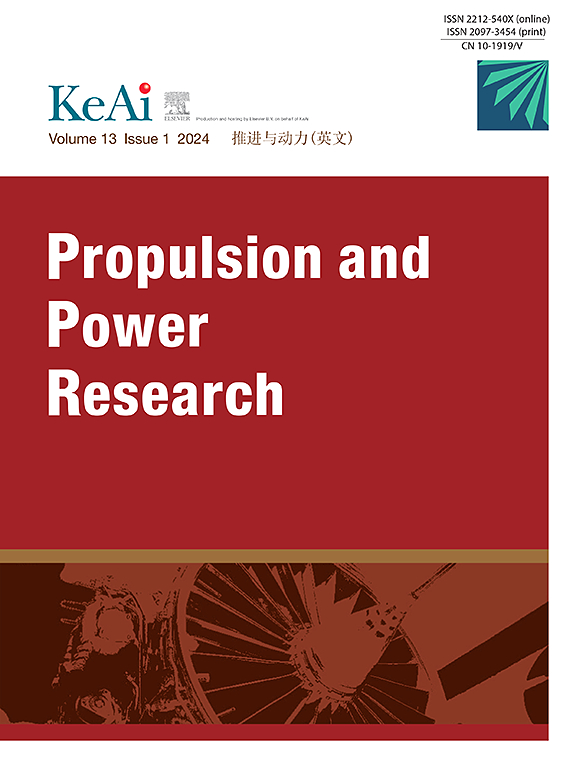探讨交直流电场作用下非定常边界层流动的热管理
IF 5.4
2区 工程技术
Q1 ENGINEERING, AEROSPACE
引用次数: 0
摘要
采用数值方法研究了在交流或直流电场作用下多孔层的非定常边界层流动。采用基于Crank-Nicolson的有限差分法求解非线性系统。采用分数剪应力和Cattaneo热流模型建立控制方程,采用Caputo分数导数计算时间分数导数。数值结果显示了不同参数对动量和热边界层的影响。结果表明,当速度分数阶导数参数和速度弛豫时间较大时,由于分子的碰撞和相互作用,从而交换动量达到新的平衡,从而在速度剖面中出现时间延迟。此外,磁导率、磁场强度(哈特曼数)、格拉什夫数和毕奥数等因素对边界层内的流体运动、热对流和温度梯度有显著影响。这种见解在工程应用中至关重要,例如提高采收率,地热油藏管理和先进的冷却系统,在这些应用中,流体动力学和传热的精确控制对于优化性能和资源利用至关重要。本文章由计算机程序翻译,如有差异,请以英文原文为准。
Towards understanding thermal management in unsteady boundary layer flow with AC/DC electric fields
Unsteady boundary layer flow induced by alternating current (AC) or direct current (DC) electric field through a porous layer is investigated numerically. The finite difference method based on Crank-Nicolson is applied to solve the nonlinear system. The governing equations are built with fractional shear stress and the Cattaneo heat flux model, and time fractional derivatives are computed using the Caputo fractional derivative. The numerical results are presented to demonstrate the effects of varying parameters on momentum and thermal boundary layer. The results reveal that the time delay in the velocity profile occurs for larger values of both the velocity fractional derivative parameter and the velocity relaxation time due to the molecules colliding and interacting, thereby exchanging momentum to achieve a new equilibrium. Additionally, factors such as permeability, magnetic field strength (Hartmann number), Grashof number, and Biot number are shown to significantly influence fluid movement, heat convection, and temperature gradients within the boundary layer. This insight is of paramount importance in engineering applications such as enhanced oil recovery, geothermal reservoir management, and advanced cooling systems, where precise control of fluid dynamics and heat transfer is essential for optimizing performance and resource utilization.
求助全文
通过发布文献求助,成功后即可免费获取论文全文。
去求助
来源期刊

Propulsion and Power Research
Multiple-
CiteScore
7.50
自引率
5.70%
发文量
30
期刊介绍:
Propulsion and Power Research is a peer reviewed scientific journal in English established in 2012. The Journals publishes high quality original research articles and general reviews in fundamental research aspects of aeronautics/astronautics propulsion and power engineering, including, but not limited to, system, fluid mechanics, heat transfer, combustion, vibration and acoustics, solid mechanics and dynamics, control and so on. The journal serves as a platform for academic exchange by experts, scholars and researchers in these fields.
 求助内容:
求助内容: 应助结果提醒方式:
应助结果提醒方式:


